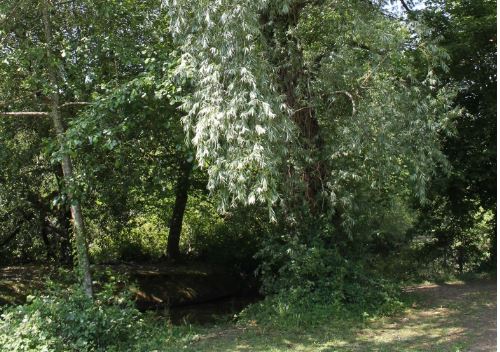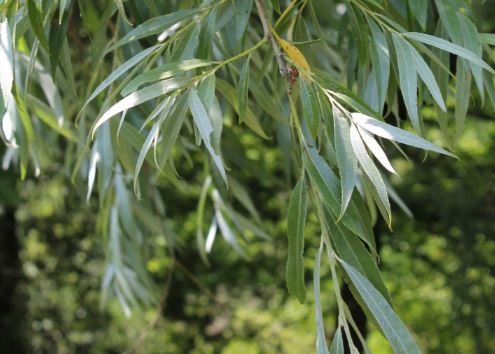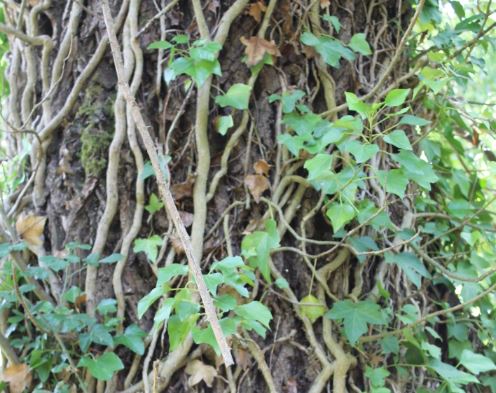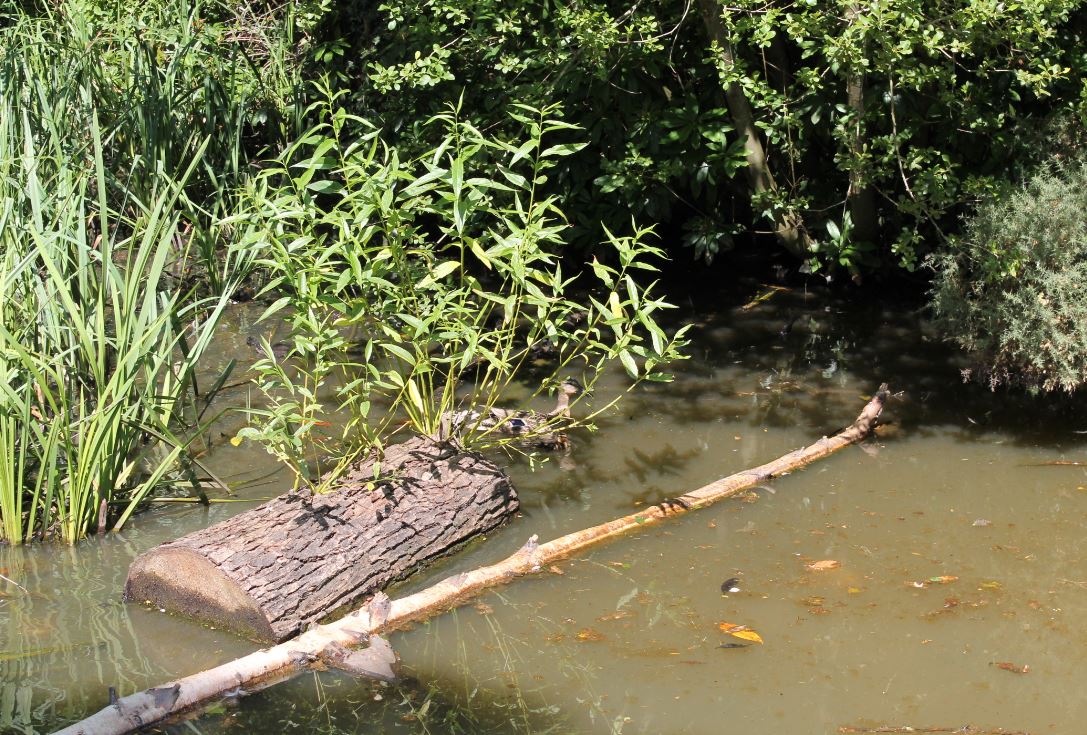Make sure your volume is on: "One tree can relive for hundreds of years"
Show transcript
We’ve got a willow tree, a nice tree about 30m tall. Salix Alba, which is white willow I believe [I’m rubbish at willow!] . A native tree to the UK, a wonderful tree. It has many, many uses. One of its uses is its bark and its sap is used in medicine. It is also used to revet rivers a lot, because it grows so well. You can literally cut a branch off, stick it in the ground, and it will grow again [it loves water]. So they weave them along river branks as a natural barrier. That’s about all I know about willow!
It loves water, so you will always find it near a wet area and rivers. It will grow elsewhere but it is predominantly in a wet area. And one of its reproduction systems is that it will drop branches into the river which will float downstream and then hit the bank and then sprout and regrow. As Scott says, you can stick a twig in the ground and it will stick roots out and start again. [We have literally got logs that we cut from a willow that people chucked them in and they’re all growing!]
We have a log in the pond that was thrown in and is now starting a new set of trees. So you may have a river bank which is actually one tree…it’s just a copy, a clone of one tree stretching all the way down the river bank…
[And wildlife chew the bark as well if they don’t feel well.]
Medicinal purposes, yes! Aspirin comes from willow. Generally depending on its surroundings – this one has gone straight up and out – its form will vary in its habitat. So it will grow sideways, it will grow up, it will grow down. It will grow wherever the light demands.
It has got quite a fissured bark. The younger stems are very green which is used for basketweaving and various other woodcrafts. The leaf is a lance shape, which is great for the ground flora because it lets the dappled light down.
What else do we like about willow? It is great for coppicing…coppicing is a system of cutting down trees and regenerating it for a process [they are using it for biomass] so one tree can relive for hundreds of years by cutting it down every 20 years and taking off all that new growth. So it is the same rootstock system in the ground, but the branches just keep refreshing.



